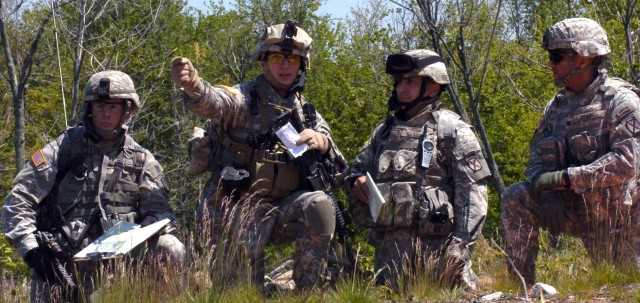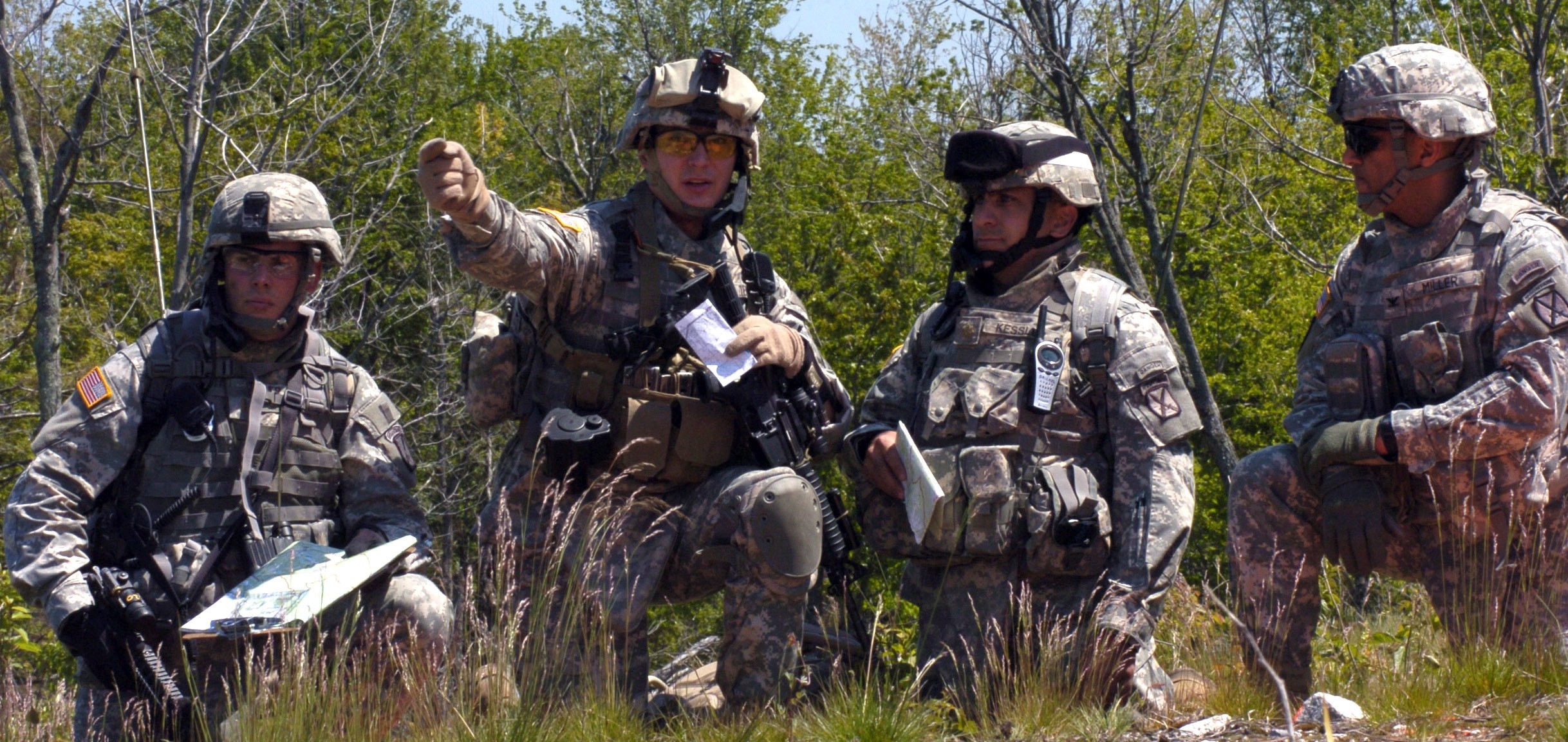
FORT DRUM - The 2nd Brigade Combat Team conducted a fire support coordination exercise June 2-6 at Range 48 here.
The purpose of the exercise was to train and validate company commanders, fire support officers and joint tactical air controllers in planning and executing indirect fires, close combat attack and close air support.
"The importance of this exercise is to get company commanders and FSOs trained on their critical leader tasks," said Col. David Miller, 2nd BCT commander.
During the exercise, company commanders and their FSOs had the ability to direct 81 mm and 120 mm mortars, 105 mm howitzers and close combat attack provided by 6th Squadron, 6th Cavalry Regiment's OH-58 Kiowas. Commanders also had to work with joint tactical air controllers to coordinate and direct the close air support of A-10 warthogs, F-16 Fighting Falcons and F-15E Strike Eagles.
"The effect of this is the most realistic training the company commanders and fire support officers will ever get," Miller said. "To me, these are commanders' basic skills."
Company commanders started the planning phase of the exercise May 14 where they had to develop maneuver plans after receiving brigade and battalion orders.
"The commanders got the appreciation of the art and science of battle command, which is the integration of maneuvers, fire support and all the assets and enablers," said Lt. Col. Heyward Hutson, 2nd Battalion, 15th Field Artillery Regiment commander. "It is important to build relationships so that they can effectively communicate and employ all assets to achieve the (brigade) commander's intent."
After forming maneuver plans, officers then had to brief the brigade commander.
"It is a very important step to be able to command and control their troops and the other assets," said Lt. Col Mark Kneram, 1st Squadron, 89th Cavalry Regiment commander. "This exercise reinforces all the command and control techniques that we have drilled over and over again, and it drives home how much combat power they have in their control. It is much greater than they realized."
Many company commanders are new in the position since 2nd BCT's recent redeployment from Iraq.
"For most of the officers, this is a brand-new team and this is the first time they have had to execute leadership tasks," said Lt. Col. John Petkosek, 2nd Battalion, 14th Infantry Regiment commander. "This is the first time they have had to integrate fires into their maneuver plan, and they gained an appreciation for it."
Being the first time company commanders have done something like this, they realize there is a lot to know.
"I realize there is a world of knowledge to learn about fires, and I may not have mastered anything, but I do know what I do not know about fires," said Capt. Tom Miller, C Troop, 1-89 commander.
Flexibility was built into the exercise to accomplish the intent.
"This exercise was designed so that the commanders could do what they wanted to do and not be limited to the lane," the brigade commander said. "So every company commander chose to do things differently."
Company commanders look at this exercise as a learning tool to build upon.
"This exercise helps improve us as commanders," said Capt. Rich Thompson, D Company, 2-14 Infantry commander. "It is my job to direct assets in a combat way, and this helps to learn what to do and what to avoid when in a real-life event."
The brigade command is planning another exercise in the near future.

Social Sharing